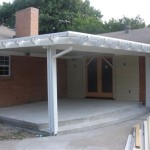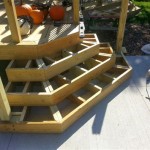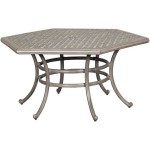Round Patio Paving: An Essential Guide to Creating a Stylish and Functional Outdoor Space
Round patio paving has become increasingly popular for creating stylish and functional outdoor spaces. With its organic shape and versatile design, round paving can enhance the aesthetic appeal of your garden, transform your entertaining area, and offer a practical solution for various outdoor activities.
Benefits of Round Patio Paving
Round patio paving offers numerous advantages over traditional rectangular or square designs:
*
Aesthetic appeal: The circular shape creates a softer, more inviting ambiance and draws attention to the center of the patio.
*
Versatility: Round paving can be adapted to different sizes and shapes, allowing for customization to suit your space and needs.
*
Flow: Circular paving directs foot traffic and visually connects different elements of your garden.
*
Drainage: The curved shape allows for water to drain more effectively, reducing the risk of waterlogging.
*
Durability: High-quality paving materials, such as stone or concrete, offer excellent durability and can withstand heavy use.
Materials for Round Patio Paving
Various materials can be used for round patio paving, each with its unique properties:
*
Natural Stone: Limestone, sandstone, and granite are popular choices for their natural beauty and durability.
*
Concrete: Pavers or slabs made from concrete provide a cost-effective and customizable option.
*
Porcelain: Porcelain tiles offer a wide range of colors and patterns and are highly resistant to wear and tear.
*
Brick: Brick paving creates a classic and timeless look while providing durability and traction.
Design Considerations for Round Patio Paving
When designing a round patio paving, several factors should be considered:
*
Size: Determine the appropriate diameter based on the size of your available space and the intended use of the patio.
*
Shape: Consider a perfect circle or an oval shape to create a more dynamic and visually interesting effect.
*
Materials: Choose materials that complement the architecture of your home and the overall style of your garden.
*
Layout: Plan the placement of the patio to maximize sun exposure, privacy, and flow.
*
Edge detail: Add a border or edge around the perimeter to define the space and prevent soil erosion.
Installation of Round Patio Paving
The installation process for round patio paving generally involves the following steps:
*
Site preparation: Excavate the area and create a stable base of compacted gravel.
*
Laying the pavers: Start from the center and work outwards, ensuring a level surface.
*
Grouting: Fill the joints between the pavers with sand or grout to secure them and prevent weeds.
*
Edging: Install a border or edge around the perimeter for stability and aesthetics.
Maintenance of Round Patio Paving
To keep your round patio paving looking its best and prolong its lifespan, follow these maintenance tips:
*
Regular cleaning: Use a pressure washer or brush to remove dirt and debris.
*
Seal the surface: Apply a sealer regularly to protect against stains and discoloration.
*
Remove weeds: Apply herbicide or manually remove weeds to prevent them from damaging the joints.
*
Check for damage: Inspect the paving periodically for any cracks or loose pavers and repair them promptly.

Concrete Paver Circle Pattern Rcp Block Brick

Circlestone Willow Creek Paving Stones

How To Lay A Circular Patio Inspiration

Old Dominion Circle Kits Mutual Materials

Ridge Circle Inlays Borders Kits Nicolock

Old Town Flagstone Circle Paver Kit Nicolock Paving Stones

N Sandstone Garden Paving Circle Marshalls

Concrete Paver Circle Pattern Rcp Block Brick

Paver Circle Kit Allows You To Add Interest And Curves Your Patio

Inside Out How A Nationally Known Interior Stylist And Her Dedicated Diy Er Husband Took It Outside To Add Circular Patio In Their Backyard Pine Hall Brick


















